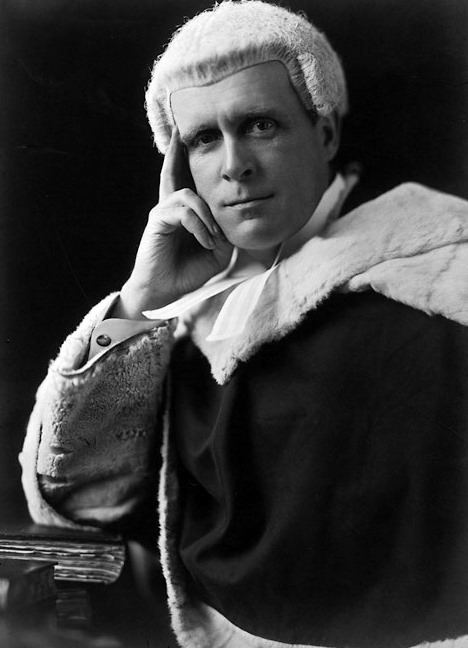Nationality British Role British Politician | Name John 1st Prime Minister Ramsay Macdonald Spouse(s) Unmarried Party Labour Party | |
 | ||
Born 26 October 1866 ( 1866-10-26 ) Died February 6, 1948, London, United Kingdom Succeeded by Douglas Hogg, 1st Viscount Hailsham | ||
Preceded by The Viscount Hailsham | ||
John Sankey, 1st Viscount Sankey (26 October 1866 – 6 February 1948) was a British lawyer, judge, Labour politician and Lord Chancellor of Great Britain, famous for many of his judgments in the House of Lords. He gave his name to the Sankey Declaration of the Rights of Man (1940).
Contents
Background and education
He was the son of Thomas Sankey, of Moreton, Gloucestershire, by his wife Catalina (née Dewsbury), and was educated at Lancing, Sussex and Jesus College, Oxford, graduating with a second-class BA in Modern History in 1889 and a third-class Bachelor of Civil Law degree in 1891. He was called to the Bar, Middle Temple, in 1892. In 1909 he was appointed a King's Counsel.
Political and legal career
Sankey became a judge of the High Court, King's Bench Division, in 1914. He was appointed a Lord Justice of Appeal in 1928. He was raised to the peerage as Baron Sankey, of Moreton in the County of Gloucester, in 1929 on being appointed Lord Chancellor in Ramsay MacDonald's Labour government. He was one of the few Labour politicians to follow MacDonald into the National Government in 1931, and served as Lord Chancellor until 1935, when Stanley Baldwin re-entered office. In 1932 he was created Viscount Sankey, of Moreton in the County of Gloucester.
Several of his judgments in the House of Lords have become landmark statements of law. Of particular note are his statements in Edwards v. Canada (Attorney General) (often referred to as the Persons Case) which dealt with the eligibility of women to be appointed to the Canadian Senate. In his decision, Sankey set out the living tree doctrine of constitutional interpretation that has become a foundation of Canadian constitutional law.
Sankey's judgment in Woolmington v DPP [1935] AC 462 is famous for iterating the duty inherent on the prosecution to prove the prisoner's guilt beyond a reasonable doubt. In pertinent part, his judgment stated:
Throughout the web of the English criminal law one golden thread is always to be seen - that it is the duty of the prosecution to prove the prisoner's guilt subject to what I have already said as to the defence of insanity and subject also to any statutory exception...
This judgment is usually referred to as the 'golden thread'.
Sankey Declaration
Sankey's name was associated with the Sankey Declaration of the Rights of Man, the product of the Sankey Committee, which was set up in 1940 by the Daily Herald and the National Peace Council, and which Sankey chaired. The most active member of the committee was H.G. Wells, who prepared the draft that the Declaration was based on. It identified eleven fundamental human rights:
The Sankey Declaration was widely publicised by its sponsors at the time, but has since been largely forgotten, having been overtaken by the Universal Declaration of Human Rights.
Sankey played a key role in establishing the legal framework of the newly disestablished Church in Wales.
Personal life
Sankey never married. He died in February 1948, aged 81, when the barony and viscountcy became extinct. A house at his former school Lancing College is named after him.
